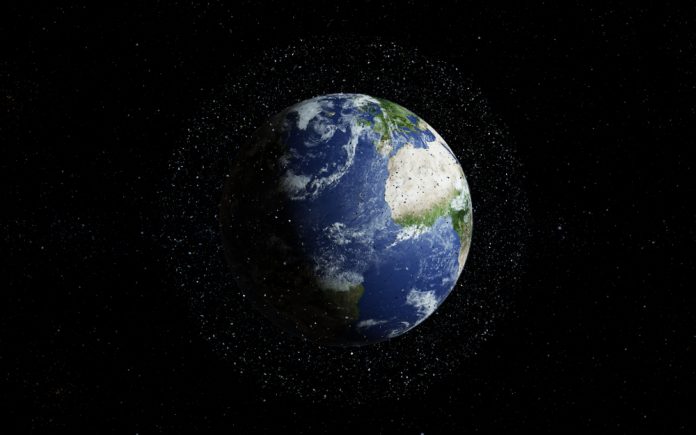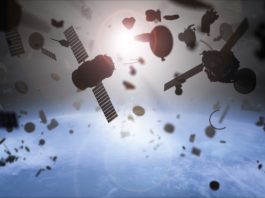A University of Alaska Fairbanks scientist is participating in a US Government effort to design a satellite and instruments capable of detecting small space debris measuring up to 1 centimetre.
Small space debris, which cannot currently be detected from the ground, can damage satellites and other spacecraft in low-Earth orbit.
The idea is to outfit future satellites, such as those vital for communication systems, with technology to avoid space debris collisions.
Determining the collision distance of small space debris
Most space debris travels at high speeds of around 17,500 mph. A 1cm object travelling at that speed has an impact energy equivalent to that of a small explosive such as a hand grenade.
Space debris comes in many shapes and sizes and consists of defunct satellites, spent rocket stages, fragments from collisions, and other human-made objects that no longer serve a purpose.
UAF Geophysical Institute research professor Paul Bernhardt and colleagues from the University of Calgary in Canada have devised a method to determine a small object’s distance from a satellite or spacecraft and the angle of its approach.
The method is based on their discovery that an object in orbit creates waves as it passes through naturally occurring plasma disturbances — known as striations — that occur along Earth’s magnetic field lines.
Onboard sensing and magnetic wave fields
Bernhardt and colleagues are developing the instruments that would use this method. He also is designing the satellite that will carry the instruments for this initial test, called the Space Debris Hunter.
“The whole satellite will be dedicated to detection of space debris from the ground,” he said.
The direction of a piece of small space debris would be determined by an onboard sensor that simultaneously measures electric and magnetic wave fields to detect signals emanating from the space object.
A separate sensor would record changes in signal frequency over time. Analysis of these data would then be used to determine the direction and distance of the space debris to reveal its location.
Bernhardt explained: “Several measurements of this type are sufficient to predict the future path of the debris. That’s the new science we’re exploring.”
This knowledge will allow satellites to be steered away from the path of the debris. Therefore, operators of the Starlink system take more than 20,000 collision avoidance actions per year.
Wider US efforts to tackle the issue of small space debris
The work is part of a wider US Government effort to track space debris. It is based on work supported in part by the Office of the Director of National Intelligence, Intelligence Advanced Research Projects Activity.
It was performed in collaboration with contractor Blue Halo in the IARPA Space Debris Identification and Tracking programme.
The US debris-tracking programme estimates that more than 100 million objects greater than 1 millimetre in size orbit Earth, but less than 1% of space debris that can cause mission-ending damage is tracked.
Because of these factors, there is an increased interest in tracking space debris.









